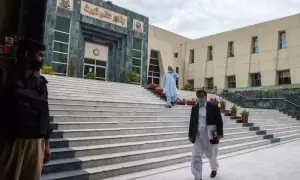Connectivity challenges hamper potential of Pakistan’s successful BRT systems: report
The Asian Development Bank (ADB) report on the CAREC Road Safety Engineering Manual highlighted the successes and challenges of Pakistan’s Bus Rapid Transit (BRT) systems. While the BRT systems in major Pakistani cities like Lahore, Multan, and Rawalpindi-Islamabad have shown high levels of user satisfaction and effectiveness, the report identified a key issue - the lack of effective transport options to reach the BRT systems.
The report noted that in contrast, China’s BRT systems often include high-quality services to increase ridership. In Pakistan, the BRT systems have led to increased population density, development volume, and land use for economic activities in the areas they serve.
However, the report suggests that these benefits could be further improved by addressing issues related to transit, walking, and security, especially for women.
The report highlighted several ways to improve the ridership and effectiveness of Pakistan’s BRT systems:
- Dedicate more lanes exclusively for BRT vehicles to allow for faster movement compared to other traffic. This dedicated lane design can improve BRT speed and reliability.
- Strategically develop BRT systems in areas with high demand, which could allow the fare revenue to cover more of the operating costs.
- Increase the spacing between BRT stations to improve overall speed and reliability, while balancing this with ensuring acceptable walking distances for users.
The report also noted that a previous study in Pakistan identified speed as a critical factor in crash severity on motorways. Based on this, the CAREC Road Safety Engineering Manual emphasizes the importance of speed management as a powerful and cost-effective way to improve road safety.
While the manual does not recommend lowering speeds to the point of restricting mobility, it promotes a “safe system” approach that works towards safer speed levels. The manual provides evidence on the benefits of safe speed management and outlines specific speed management interventions to guide CAREC countries.
It also aims to address common misunderstandings about speed management to facilitate discussions with the public and decision-makers.
The report emphasizes that the costly impacts of unsafe speeds can be effectively managed through the adoption of evidence-based speed management interventions. These interventions that reduce speeds are a highly cost-effective opportunity for CAREC countries to dramatically reduce crash-related deaths and injuries within a reasonable timeframe.
The report states that speed-managing interventions are highly cost-effective, with some returning as much as $17 in savings for every $1 invested. CAREC governments would be hard-pressed to find investments with stronger returns than these speed management initiatives.
The report notes that even a relatively modest reduction in travel speeds of just 10 km/h across all roads in the CAREC region could result in cutting the number of crash deaths by more than half, while also delivering additional economic benefits.
Read more
Motorway police to escort buses through Kallar Kahar to prevent crashes
For the latest news, follow us on Twitter @Aaj_Urdu. We are also on Facebook, Instagram and YouTube.





















Comments are closed on this story.